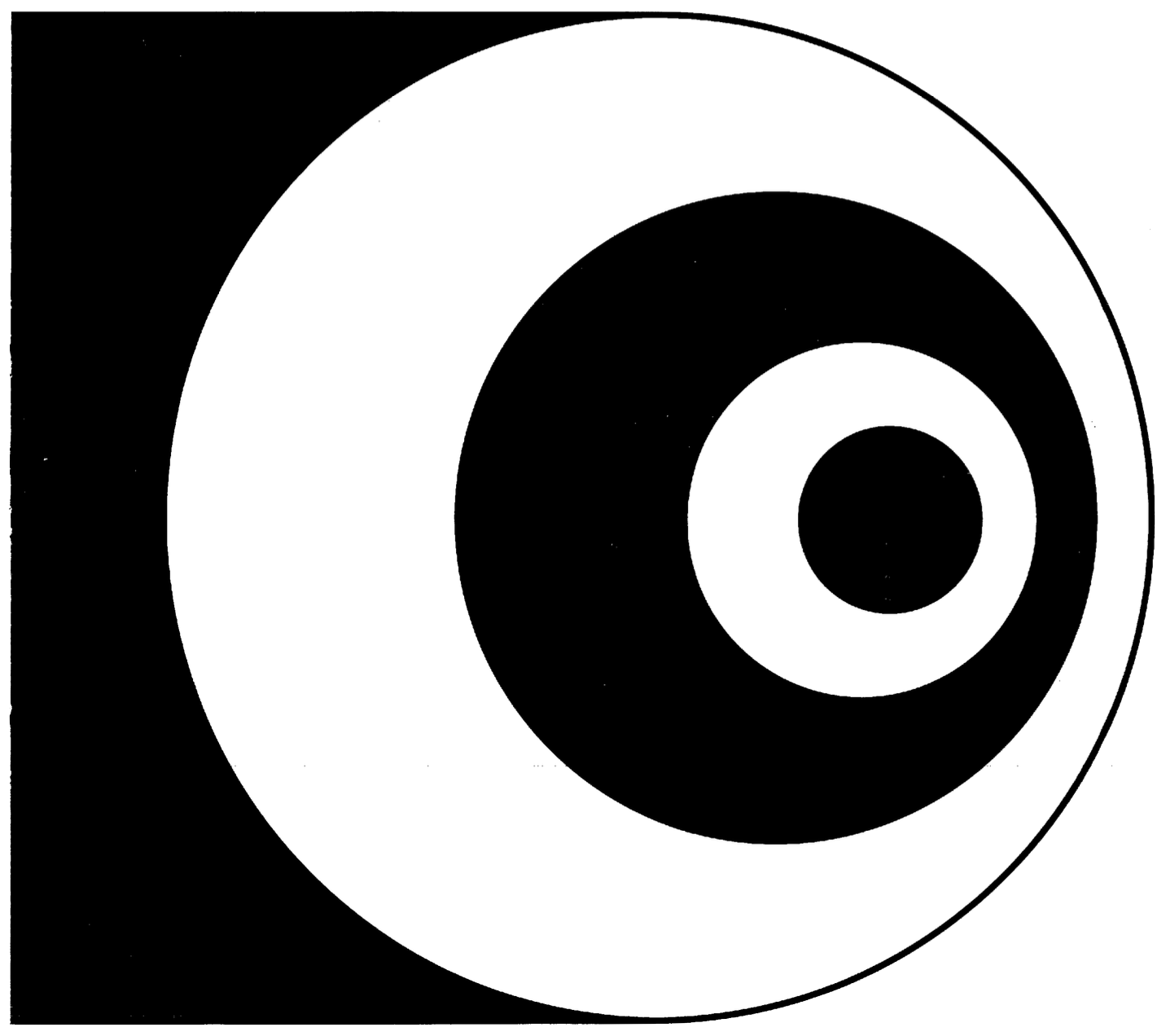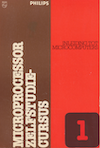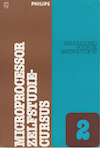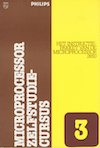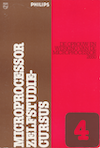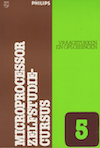Signetics Instructor 50
The Instructor 50 is one of the earliest systems targeted at classrooms. I acquired one including full documentation and a course on microprocessors (all in Dutch). It is in perfect working condition. The latest datecode that I found was on the 7-segment riser: week 12 of 1979; the serial number is 2781.
The only issue I had was that some of the keys on the numeric keypad were unreliable, often requiring more than one attempt before they ‘fired’, and sometimes registering twice. The keypads are completely sealed, so cleaning is difficult. Compressed air did not help. Another Instructor user with the same issue obtained good results with PCB cleaner. This did work for me as well (thanks Dick!), but it did stain the plastic a bit so I am unsure whether to recommend this to others.
Technical details on the Instructor 50
| CPU | 2650A @ 895 kHz. |
| Power | 8 Volt AC with adapter. |
| ROM | 2 kByte “USE” monitor. |
| RAM | 512 bytes for programs, plus 64 for data. |
| Connection | S100 bus. |
| Operator controls | 8 positions 7-segment display. Hex keypad. 12-key function keypad. Run/Pause LED indicator. Toggle switch for direct/indirect jump to interrupt vector address 0007. |
| Parallel Input | 8 toggle switches. Port is switch selectable: – data port D; – extended IO port 7; – memory mapped at address 0FFF. |
| Parallel Output | 8 LEDs, switch selectable as above. |
| Serial I/O | Sense pushbutton; Flag signal indicated by LED. |
| Storage | External cassette tape, audio interface. |
| Dimensions | 35 x 25 x 7.5 cm |
| Weight | 1.2 kg, without power adapter |
Course books
These colorful books are a much expanded version of the English User Guide (see sidebar). The books form a complete and integrated self-study course on programming the 2650 microprocessor. Book 3, for example, not just describes each of the 2650 instructions, but also explains how and why the programmer might want to use them, and makes references to the Problems and Solutions book for further study, when the reader wants to try the instructions for themselves. Book 4 contains the most detailed description of the internal operation of the 2650 microprocessor that I have found so far, including details on how to implement DMA and interrupts with multiple priorities.
The books are ring-bound, and printed on heavy paper. All figures are printed on fold-out pages, so that you can refer to them without having to flip back and forth through the books.
Revisions A and B
There are two versions of the English User Guide (see sidebar), dated November 1977 and June 1978. Both documents contain hardware schematics of the Instructor 50. The schematics in the 1977 version are of revision A, while the 1978 version shows revision B. Most differences that I could spot are simple corrections to labels, but revision B also adds IC53, a JK flip-flop (74LS109). My Instructor 50 is of revision A; IC53 is absent on the board. The very few pictures of the PCB on internet show two variants:
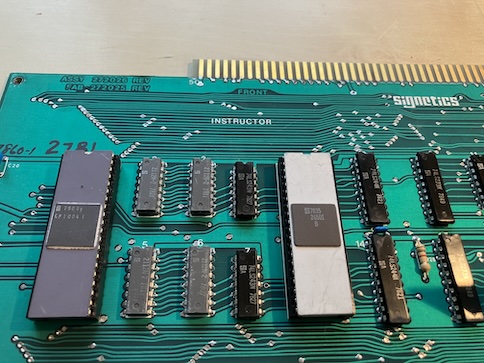
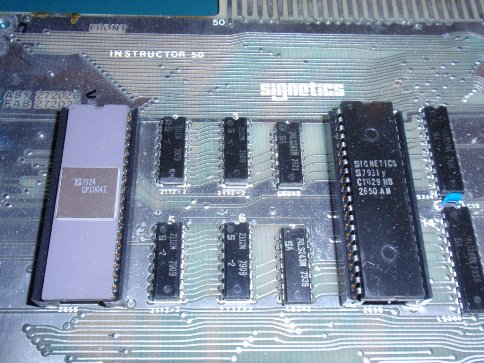
« with changes with respect to revision A marked
On some of the promotional images I have seen data cassettes. Do you know the contents of these, or do you know where I can obtain a copy? Please let me know!
Debugging hardware and software
To help understand how the 2650 functions, and to facilitate debugging of the user’s program, the Instructor offers several debugging functions. Debugging uses a clever combination of software and dedicated hardware, in a way that is surprisingly complex. For details see this page on debugging hardware and software.
Some pictures of the course books, and of the Instructor 50 itself.
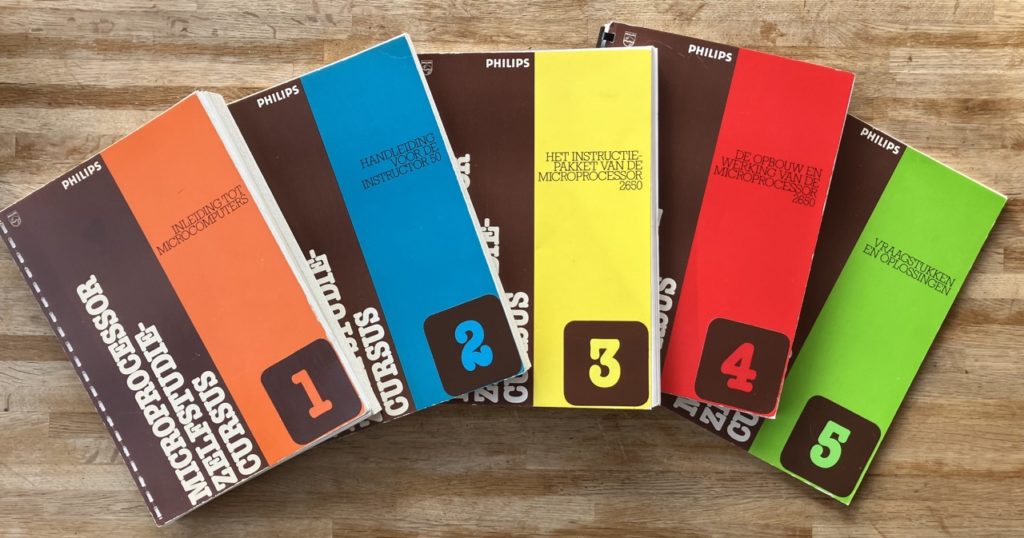
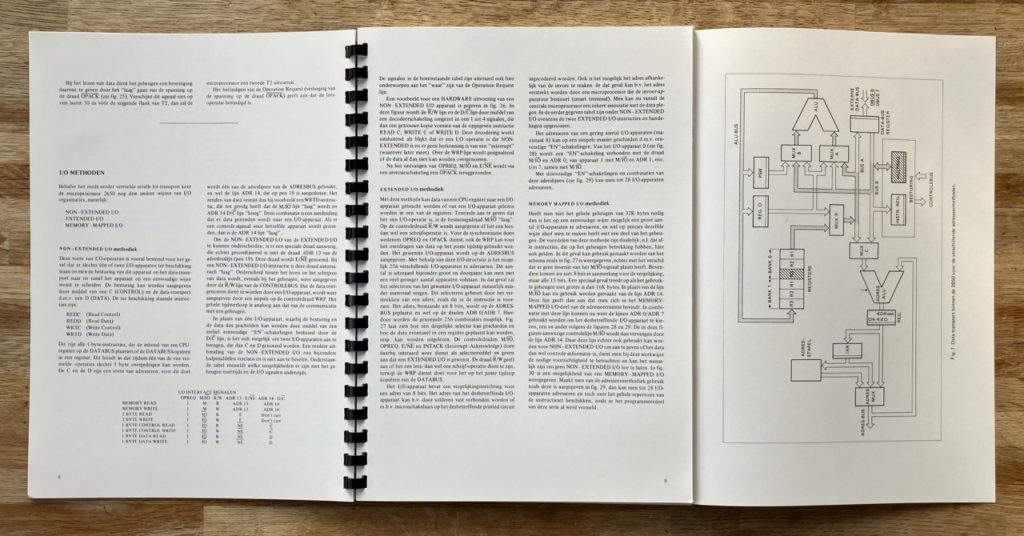
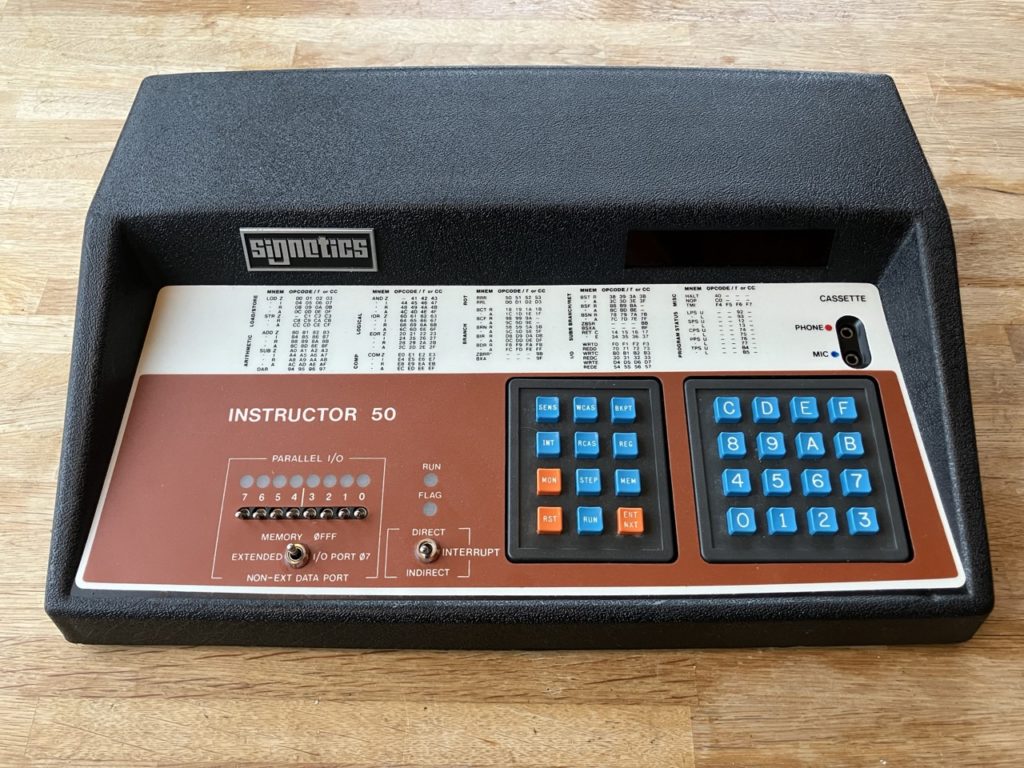
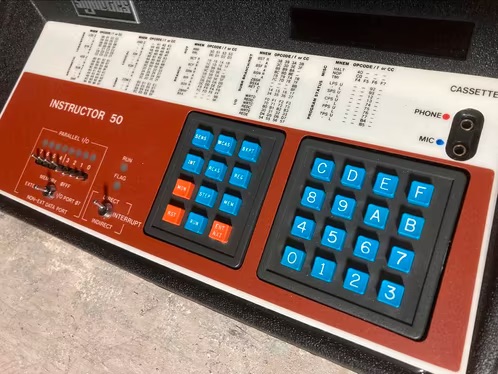
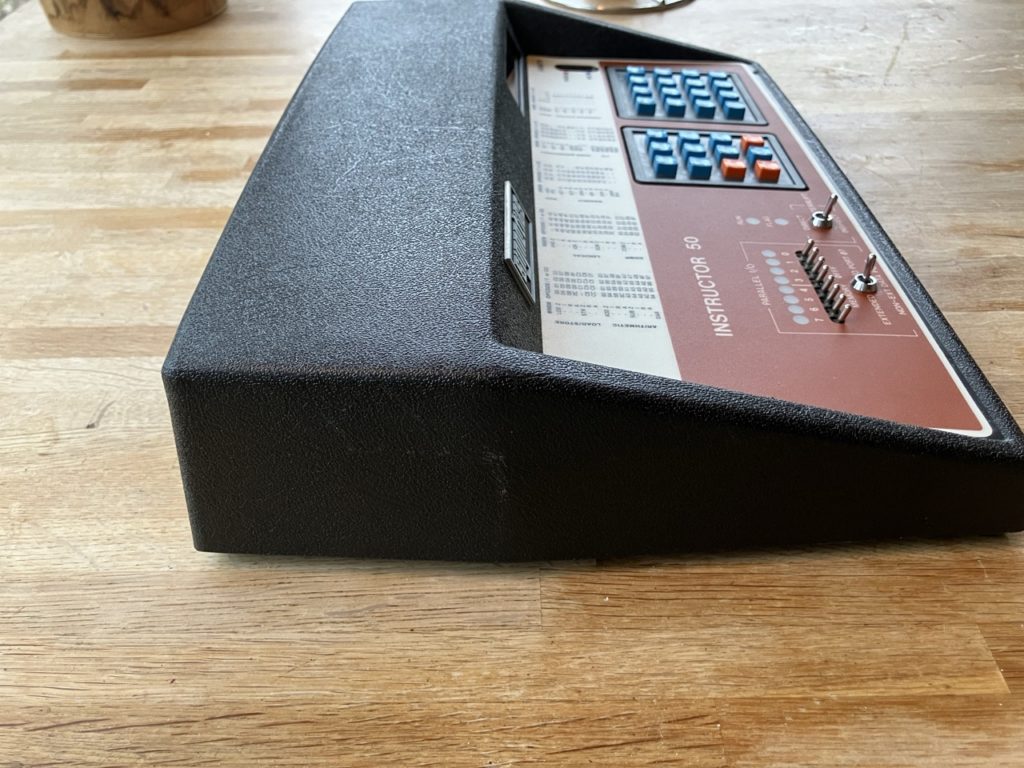
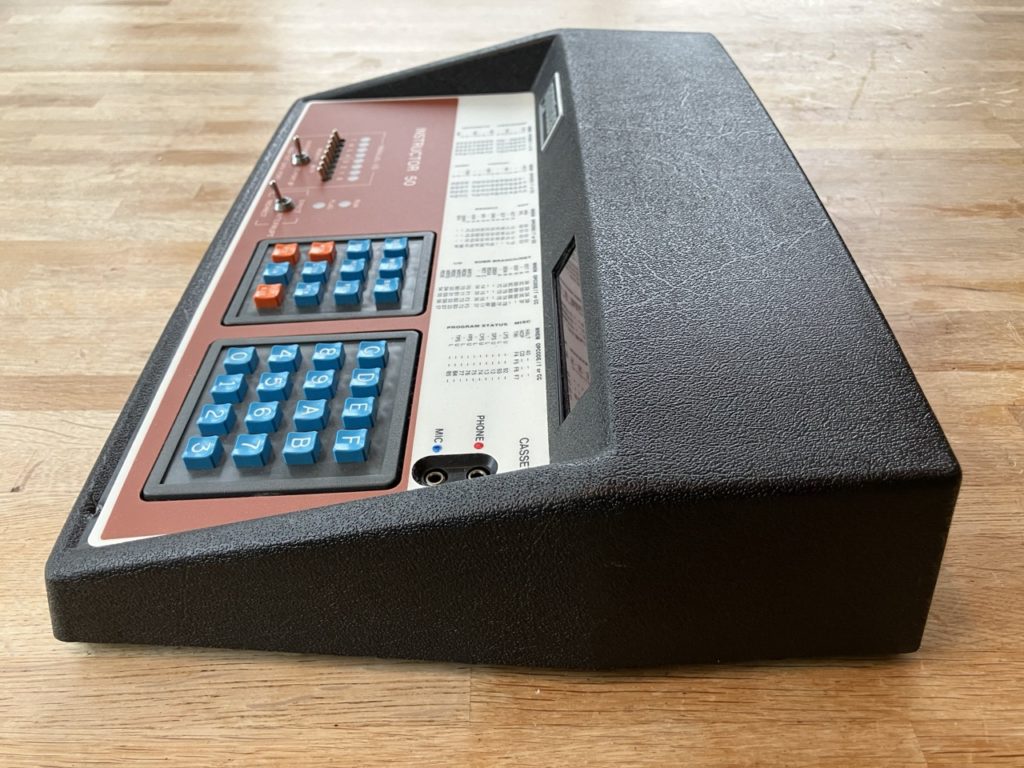
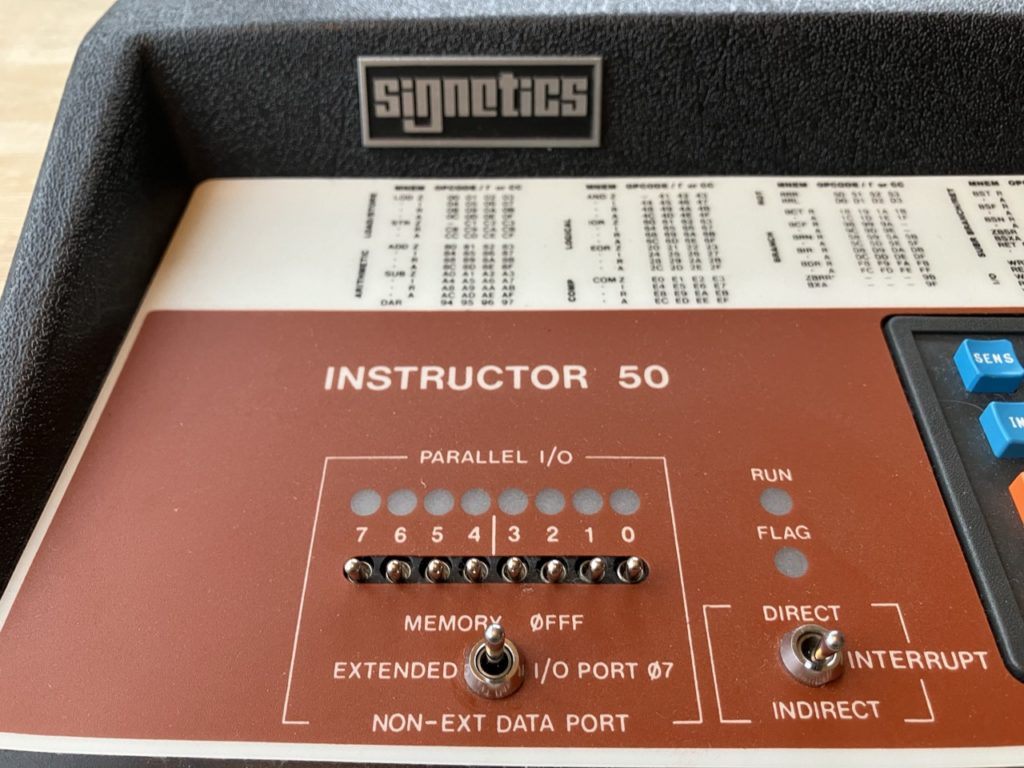
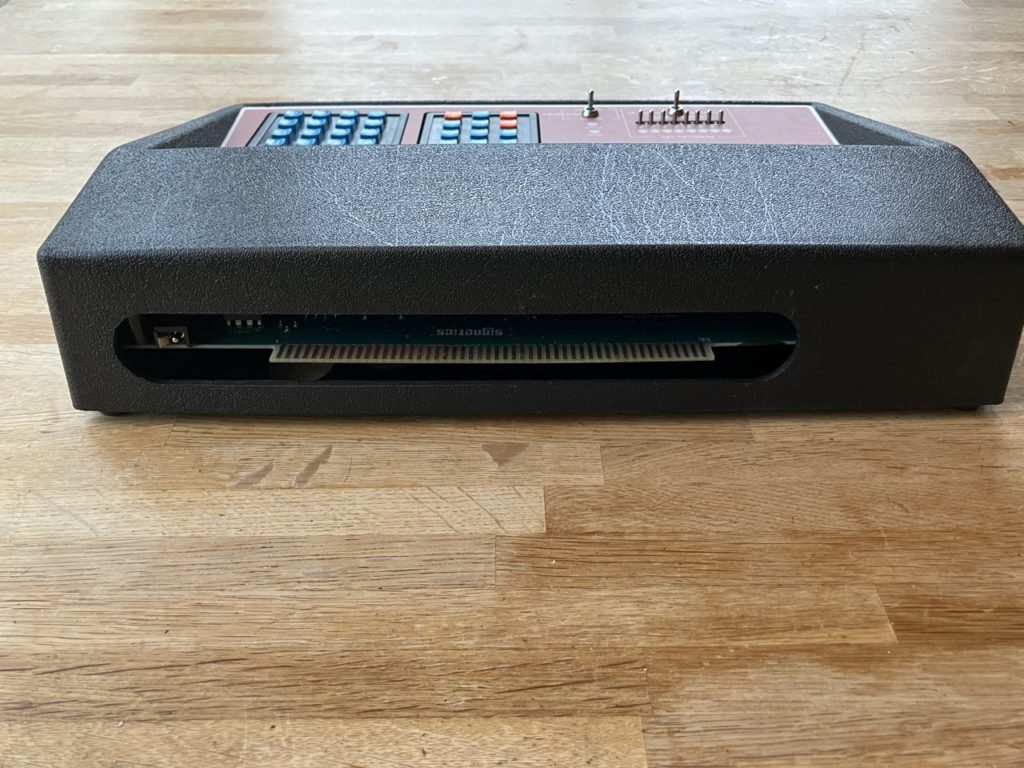
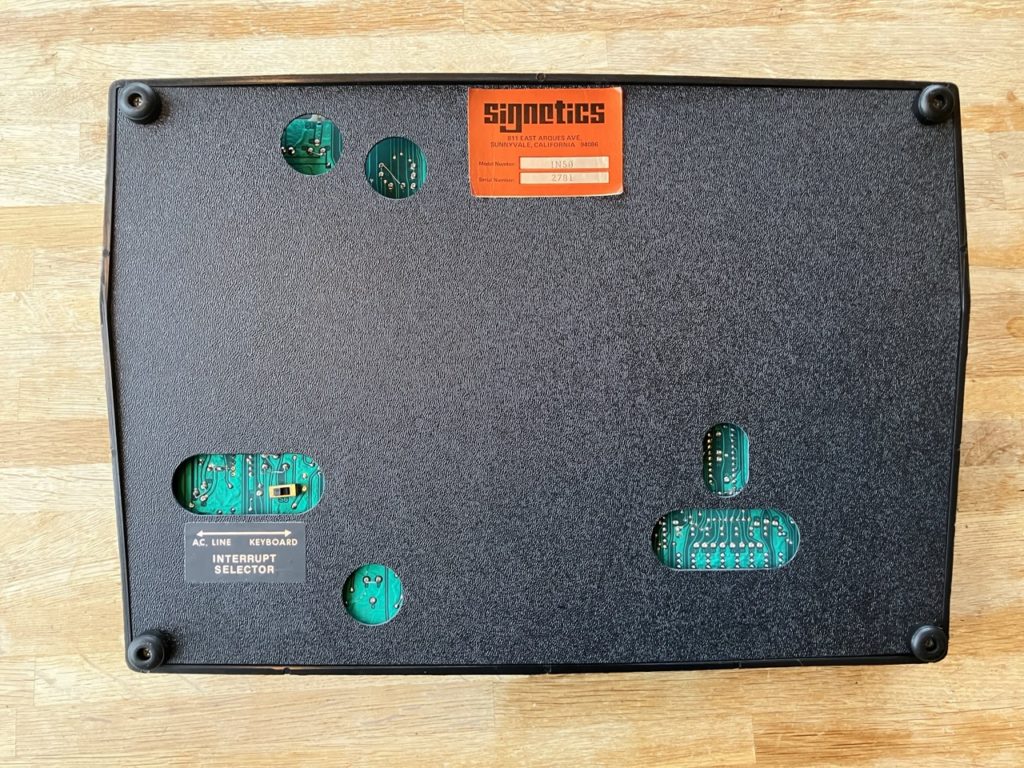
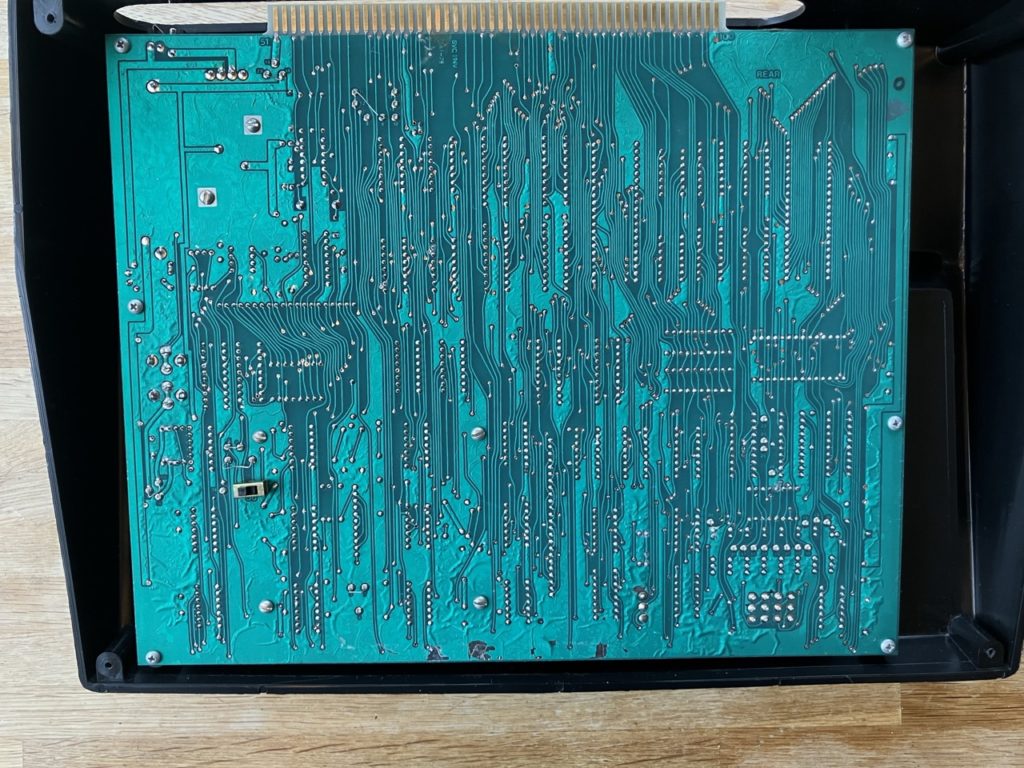
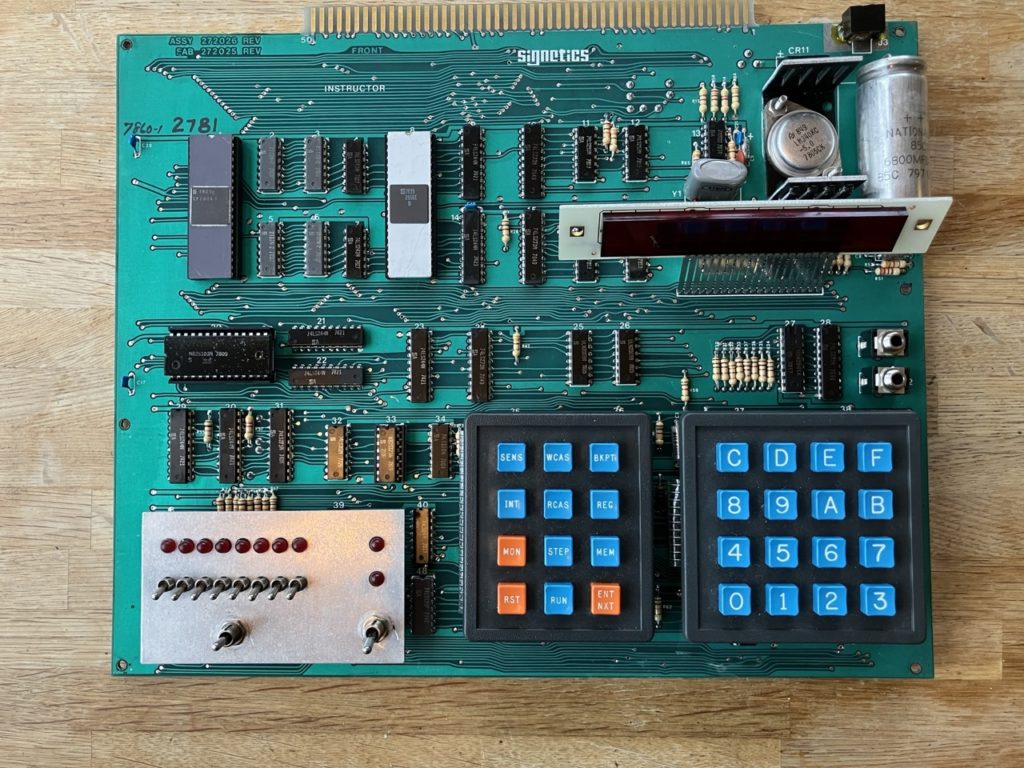
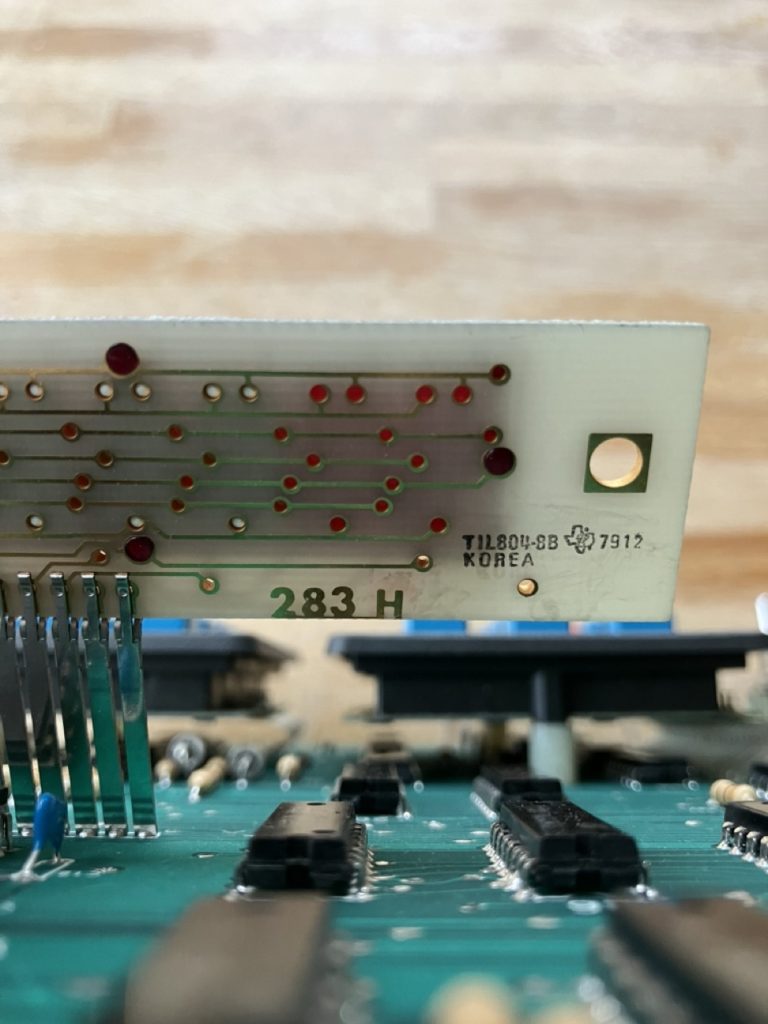
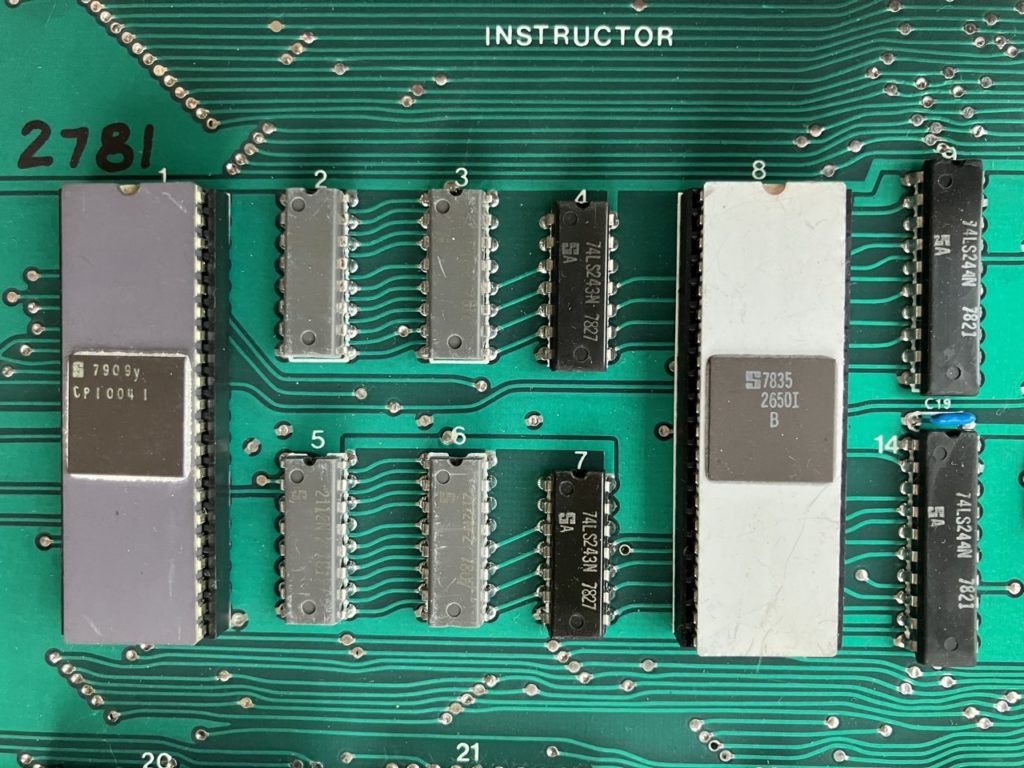
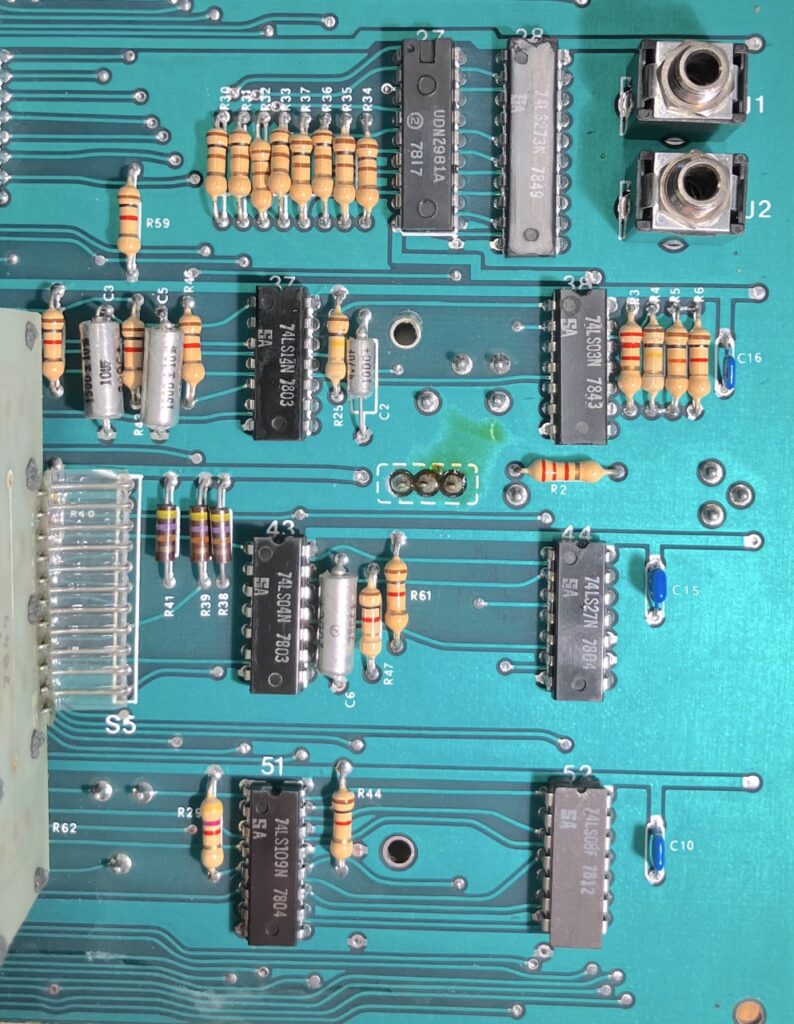
Download the books
Scans of the course books. All in Dutch, but I translated the titles.
Other documentation
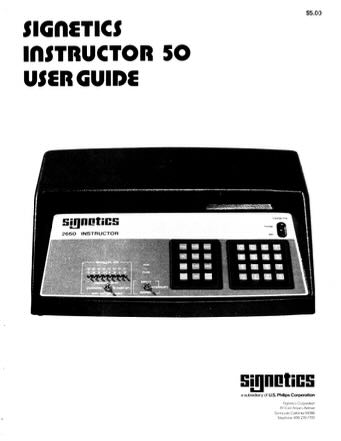
Signetics Instructor 50 User Guide, November 1977, 166 pages.
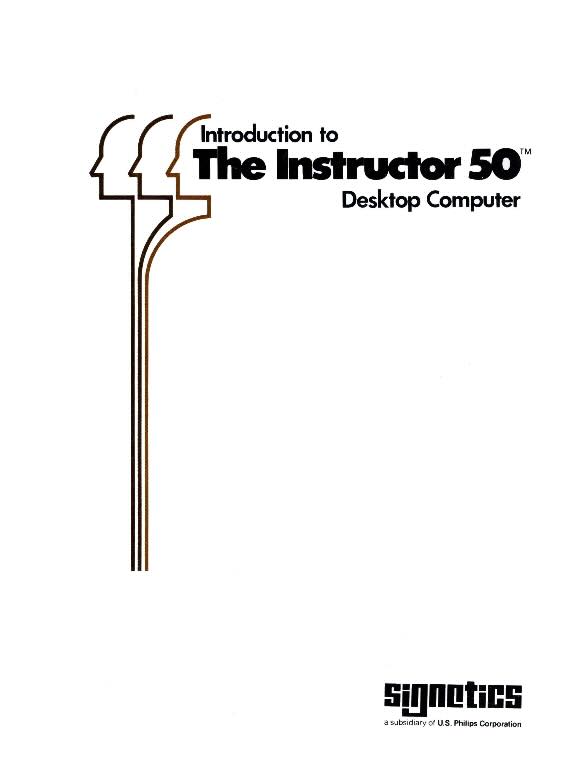
Introduction to The Instructor 50 Desktop computer, from bitsavers.org, J.E. Doll, 1978, 133 pages.
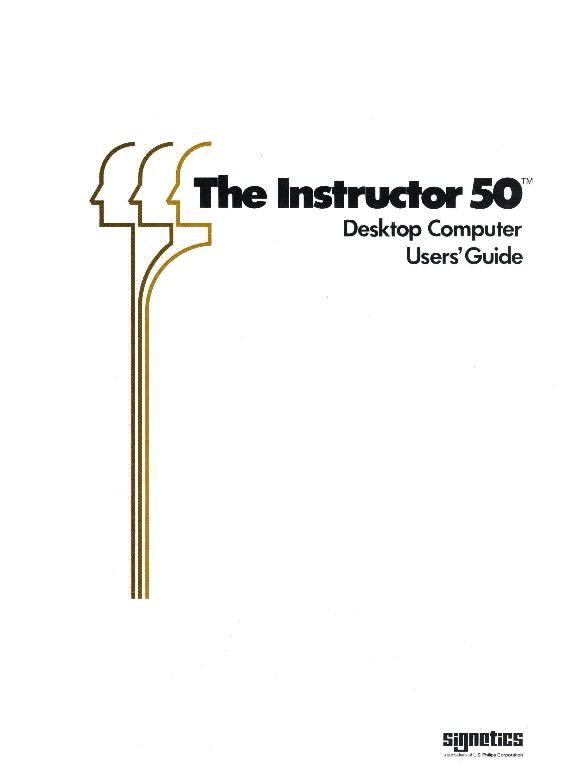
Signetics Instructor 50 Desktop Computer User’s Guide, from bitsavers.org, June 1978, 321 pages.
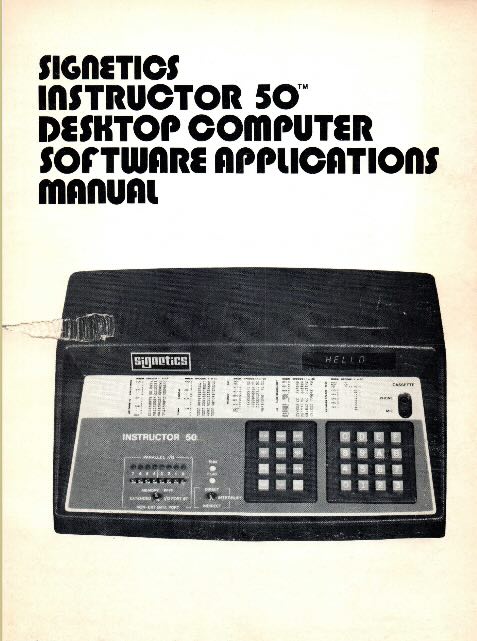
Signetics Instructor 50 Desktop Computer Software Applications Manual, John C. Garceau, 106 pages.
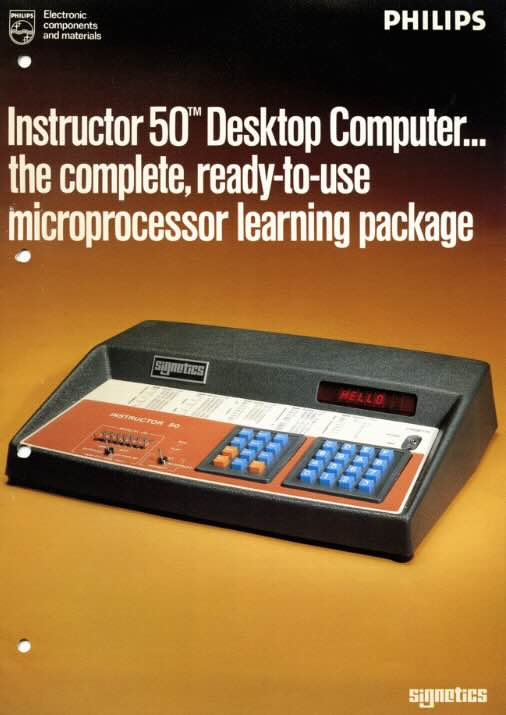
Sales brochure, December 1978, 6 pages.
